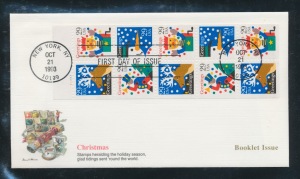By the way that some collectors squander their money, you would think that they had an overabundance of it. Throughout philatelic history, collectors have rarely been as careful as they should have been. In the late nineteenth century, few collectors scrutinized where they bought their stamps, and so reprinters and counterfeiters abounded during this period. One of the most egregious scams was the machinations of Nicholas Seebeck. In the early years of the twentieth century, Seebeck contracted with several South and Central American countries to print their stamps. In return, he kept the plates and flooded the market with stamps for collectors, which many of the collectors of this period bought willingly. But spurious and counterfeit issues weren’t the only problem. Throughout the history of our hobby, countless unnecessary stamps have been issued. Collectors are tolerant when a country like the United States issues 200 different stamps in a year. After all, we are a country of nearly 300 million people, and our Post Office handles billions of pieces of mail per year. So a robust stamp issuing policy for the United States is, while unnecessary, at least understandable. But look at Grenada (and many others). That island issues hundreds of stamps annually, most of which never see postal duty and most of which are carefully designed for the American and European market—with designs and themes that mean little to native Grenadians.
The over issuing of stamps by remote and unimportant political entities has a long and successful history in our hobby. Look at the French, Portuguese, or British Colony issues from 120 years ago (not to mention today). There are literally thousands of different stamps issued for areas like Senegambia and Niger, which represent more the geopolitical aspirations of the (in this case French) colonial philatelic office than they do any real control on the ground. The reason that stamps from these tiny spots of philatelic nowhere continue to get issued is because people continue to buy them. And the price record of the modern material is very bad. Modern mint stamps from major countries are worth a bit more than half face value as you exchange your money for them. Stamps from countries like Greanda are instantly worth less than 20% of what you paid for them.
The parade of bad philatelic investments is a long and colorful one. Perhaps the worse deal right now is US First Day Covers. The FDC market has fallen through the floor. FDCs were an adjunct to most US collections when the United States issued twenty or thirty stamps per year. Now US issues are so plentiful (and the face value so high) that few collectors go back and collect First Day covers. Additionally, the se-tenent issues and booklets that make up most of the menu of stamps produced today make for large, unwieldy, and expensive First Day Covers. The one illustrated at the top of this article is a perfect case in point. In 1996, it cost its owner $11.75 from a FDC provider, as a new issue (the stamps, whose postage value was destroyed by using them on this cover was $6.40 alone). Today, First Day Covers rarely sell in lots at more than 12¢ each.
Philately doesn’t need to be the hottest investment of the month in order to attract a devoted following. Our hobby has much else to offer. But when collectors are hosed like this it is difficult for them to maintain their interest. The answer, though, is simple, and not much different than what it always has been. Collect older stamps in nice quality. These stamps have already been depreciated from their postage days. And buy mainly $5 and up items. There you won’t be paying mostly dealer handling for the stamps you acquire.

